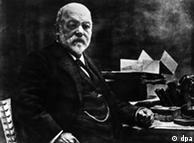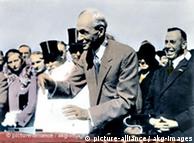
By George Friedman
The territory between the Mediterranean and the Hindu Kush has been the main arena for the U.S. intervention that followed the 9/11 attacks. Obviously, the United States had been engaged in this area in previous years, but 9/11 redefined it as the prime region in which it confronted jihadists. That struggle has had many phases, and it appears to have entered a new one over the past few weeks.
Some parts of this shift were expected. STRATFOR had anticipated tensions between Iran and its neighboring countries to rise as the U.S. withdrew from Iraq and Iran became more assertive. And we expected U.S.-Pakistani relations to reach a crisis before viable negotiations with the Afghan Taliban were made possible.

(Click here to enlarge image)
However, other events frankly surprised us. We had
expected Hamas to respond to events in Egypt and to  the
Palestine National Authority’s search for legitimacy through pursuit of U.N.
recognition by trying to create a massive crisis with Israel, reasoning that
the creation of such a crisis would strengthen anti-government forces in Egypt,
increasing the chances for creating a new regime that would end the blockade of
Gaza and suspend the peace treaty with Israel. We also thought that intense
rocket fire into Israel would force Fatah to support an intifada or be
marginalized by Hamas. Here we were clearly wrong; Hamas moved instead to reach
a deal for the exchange of captive Israel Defense Forces
soldier Gilad Shalit, which has reduced Israeli-Hamas tensions.
the
Palestine National Authority’s search for legitimacy through pursuit of U.N.
recognition by trying to create a massive crisis with Israel, reasoning that
the creation of such a crisis would strengthen anti-government forces in Egypt,
increasing the chances for creating a new regime that would end the blockade of
Gaza and suspend the peace treaty with Israel. We also thought that intense
rocket fire into Israel would force Fatah to support an intifada or be
marginalized by Hamas. Here we were clearly wrong; Hamas moved instead to reach
a deal for the exchange of captive Israel Defense Forces
soldier Gilad Shalit, which has reduced Israeli-Hamas tensions.
Our error was rooted in our failure to understand how the increased
Iranian-Arab tensions would limit Hamas’ room to maneuver. We also missed the
fact that given the weakness of the opposition forces in Egypt —
something we had written about extensively — Hamas would not see an opportunity
to reshape Egyptian policies. The main forces in the region, particularly the failure of the Arab Spring in Egypt and the
intensification of Iran’s rise, obviated our logic on Hamas. Shalit’s release, in exchange for more than 1,000
Palestinian prisoners, marks a new stage in Israeli-Hamas relations. Let’s
consider how this is related to Iran and Pakistan. the
Palestine National Authority’s search for legitimacy through pursuit of U.N.
recognition by trying to create a massive crisis with Israel, reasoning that
the creation of such a crisis would strengthen anti-government forces in Egypt,
increasing the chances for creating a new regime that would end the blockade of
Gaza and suspend the peace treaty with Israel. We also thought that intense
rocket fire into Israel would force Fatah to support an intifada or be
marginalized by Hamas. Here we were clearly wrong; Hamas moved instead to reach
a deal for the exchange of captive Israel Defense Forces
soldier Gilad Shalit, which has reduced Israeli-Hamas tensions.
the
Palestine National Authority’s search for legitimacy through pursuit of U.N.
recognition by trying to create a massive crisis with Israel, reasoning that
the creation of such a crisis would strengthen anti-government forces in Egypt,
increasing the chances for creating a new regime that would end the blockade of
Gaza and suspend the peace treaty with Israel. We also thought that intense
rocket fire into Israel would force Fatah to support an intifada or be
marginalized by Hamas. Here we were clearly wrong; Hamas moved instead to reach
a deal for the exchange of captive Israel Defense Forces
soldier Gilad Shalit, which has reduced Israeli-Hamas tensions.The Iranian Game
The Iranians tested their strength in Bahrain, where
Shiites rose up against their Sunni rulers with at least some degree of Iranian
support. Saudi Arabia, linked by a causeway to Bahrain, perceived this as a test
of its resolve, intervening with military force to  suppress
the demonstrators and block the Iranians. To Iran, Bahrain was simply a
probe; the Saudi response did not represent a major reversal in Iranian
fortunes.
suppress
the demonstrators and block the Iranians. To Iran, Bahrain was simply a
probe; the Saudi response did not represent a major reversal in Iranian
fortunes.
 suppress
the demonstrators and block the Iranians. To Iran, Bahrain was simply a
probe; the Saudi response did not represent a major reversal in Iranian
fortunes.
suppress
the demonstrators and block the Iranians. To Iran, Bahrain was simply a
probe; the Saudi response did not represent a major reversal in Iranian
fortunes.
The main game for Iran is in Iraq, where the  U.S.
withdrawal is reaching its final phase. Some troops may be left in Iraqi Kurdistan, but
they will not be sufficient to shape events in Iraq. The Iranians will not be in
control of Iraq, but they have sufficient allies, both in the government and in
outside groups, that they will be able to block policies they oppose, either
through the Iraqi political system or through disruption. They will not govern,
but no one will be able to govern in direct opposition to them.
U.S.
withdrawal is reaching its final phase. Some troops may be left in Iraqi Kurdistan, but
they will not be sufficient to shape events in Iraq. The Iranians will not be in
control of Iraq, but they have sufficient allies, both in the government and in
outside groups, that they will be able to block policies they oppose, either
through the Iraqi political system or through disruption. They will not govern,
but no one will be able to govern in direct opposition to them.
In Iraq, Iran sees an opportunity to extend its influence westward. Syria is
allied with Iran, and it in turn jointly supports Hezbollah in Lebanon. The
prospect of a U.S. withdrawal from Iraq opened the door to a sphere of Iranian
influence running along the southern Turkish border and along the northern
border of Saudi Arabia. U.S.
withdrawal is reaching its final phase. Some troops may be left in Iraqi Kurdistan, but
they will not be sufficient to shape events in Iraq. The Iranians will not be in
control of Iraq, but they have sufficient allies, both in the government and in
outside groups, that they will be able to block policies they oppose, either
through the Iraqi political system or through disruption. They will not govern,
but no one will be able to govern in direct opposition to them.
U.S.
withdrawal is reaching its final phase. Some troops may be left in Iraqi Kurdistan, but
they will not be sufficient to shape events in Iraq. The Iranians will not be in
control of Iraq, but they have sufficient allies, both in the government and in
outside groups, that they will be able to block policies they oppose, either
through the Iraqi political system or through disruption. They will not govern,
but no one will be able to govern in direct opposition to them.The Saudi View
The origins of the uprising against the regime of Syrian President Bashar al Assad are murky. It emerged during the general instability of the Arab Spring, but it took a different course. The al Assad regime did not collapse, al Assad was not replaced with another supporter of the regime, as happened in Egypt, and the opposition failed to simply disintegrate. In our view the opposition was never as powerful as the Western media portrayed it, nor was the al Assad regime as weak. It has held on far longer than others expected and shows no inclination of capitulating. For one thing, the existence of bodies such as The International Criminal Court leave al Assad nowhere to go if he stepped down, making a negotiated exit difficult. For another, al Assad does not see himself as needing to step down.
Two governments have emerged as particularly hostile to al Assad: the Saudi government and the Turkish government. The Turks attempted to negotiate a solution in Syria and were rebuffed by al Assad. It is not clear the extent to which these governments see Syria simply as an isolated problem along their border or as part of a generalized Iranian threat. But it is clear that the Saudis are extremely sensitive to the Iranian threat and see the fall of the al Assad regime as essential for limiting the Iranians.
In this context, the last thing that the Saudis want to see is conflict with Israel. A war in Gaza would have given the al Assad regime an opportunity to engage with Israel, at least through Hezbollah, and portray opponents to the regime as undermining the struggle against the Israelis. This would have allowed al Assad to solicit Iranian help against Israel and, not incidentally, to help sustain his regime.
It was not clear that Saudi support for Syrian Sunnis would be enough to force the al Assad regime to collapse, but it is clear that a war with Israel would have made it much more difficult to bring it down. Whether Hamas was inclined toward another round of fighting with Israel is unclear. What is clear is that the Saudis, seeing themselves as caught in a struggle with Iran, were not going to hand the Iranians an excuse to get more involved than they were. They reined in any appetite Hamas may have had for war.
Hamas and Egypt
Hamas also saw its hopes in Egypt dissolving. From
its point of view, instability in Egypt opened the door for regime change. For
an extended period of time, it seemed possible that the first phase of unrest
would be followed either by elections that Islamists might win or another wave
of unrest that would actually topple the regime. It became clear months ago that
the opposition to the Egyptian regime was too divided to replace it. But it was
last week that the  power of
the regime became manifest.
power of
the regime became manifest.
The Oct. 9 Coptic demonstration that turned violent and
resulted in sectarian clashes with Muslims gave the government the opportunity
to demonstrate its resolve and capabilities without directly engaging Islamist
groups. The regime acted brutally and efficiently to crush the demonstrations
and, just as important, did so with some Islamist elements that took to the
streets beating Copts. The streets belonged to the military and to the Islamist
mobs, fighting on the same side. power of
the regime became manifest.
power of
the regime became manifest.One of the things Hamas had to swallow was the fact that it was the Egyptian government that was instrumental in negotiating the prisoner exchange. Normally, Islamists would have opposed even the process of negotiation, let alone its success. But given what had happened a week before, the Islamists were content not to make an issue of the Egyptian government’s deal-making. Nor would the Saudis underwrite Egyptian unrest as they would Syrian unrest. Egypt, the largest Arab country and one that has never been on good terms with Iran, was one place where the Saudis did not want to see chaos, especially with an increasingly powerful Iran and unrest in Syria stalled.
Washington Sides with Riyadh
In the midst of all this, the United States announced the arrest of a man who allegedly was attempting, on behalf of Iran, to hire a Mexican to kill the Saudi ambassador to the United States. There was serious discussion of the significance of this alleged plot, and based on the evidence released, it was not particularly impressive.
Nevertheless — and this is the important part — the administration of U.S. President Barack Obama decided that this was an intolerable event that required more aggressive measures against Iran. The Saudis have been asking the United States for some public action against Iran both to relieve the pressure on Riyadh and to make it clear that the United States was committed to confronting Iran alongside the Saudis. There may well be more evidence in the alleged assassination plot that makes it more serious than it appeared, but what is clear is that the United States intended to use the plot to increase pressure on Iran — psychologically at least — beyond the fairly desultory approach it had been taking. The administration even threw the nuclear question back on the table, a subject on which everyone had been lackadaisical for a while.
The Saudi nightmare has been that the United States would choose to reach an understanding with Iran as a way to create a stable order in the region and guarantee the flow of oil. We have discussed this possibility in the past, pointing out that the American interest in protecting Saudi Arabia is not absolute and that the United States might choose to deal with the Iranians, neither regime being particularly attractive to the United States and history never being a guide to what Washington might do next.
The Saudis were obviously delighted with the U.S. rhetorical response to the alleged assassination plot. It not only assuaged the Saudis’ feeling of isolation but also seemed to close the door on side deals. At the same time, the United States likely was concerned with the possibility of Saudi Arabia trying to arrange its own deal with Iran before Washington made a move. With this action, the United States joined itself at the hip with the Saudis in an anti-Iranian coalition.
The Israelis had nothing to complain about either. They do not want the Syrian regime to fall, preferring the al Assad regime they know to an unknown Sunni — and potentially Islamist — regime. Saudi support for the Syrian opposition bothers the Israelis, but it’s unlikely to work. A Turkish military intervention bothers them more. But, in the end, Iran is what worries them the most, and any sign that the Obama administration is reacting negatively to the Iranians, whatever the motives (and even if there is no clear motive), makes them happy. They want a deal on Shalit, but even if the price was high, this was not the time to get the United States focused on them rather than the Iranians. The Israelis might be prepared to go further in negotiations with Hamas if the United States focuses on Iran. And Hamas will go further with Israel if the Saudis tell them to, which is a price they will happily pay for a focus on Iran.
The U.S. Withdrawal from Afghanistan
For the United States, there is another dimension to the Iran focus: Pakistan. The Pakistani view of the United States, as expressed by many prominent Pakistanis, is that the United States has lost the war against the Afghan Taliban. That means that any negotiations that take place will simply be about how the United States, in their words, will “retreat,” rather than about Pakistani guarantees for support against jihadists coupled with a U.S. withdrawal process. If the Pakistanis are right, and the United States has been defeated, then obviously, their negotiating position is correct.
For there to be any progress in talks with the  Taliban and
Pakistan, the United States must demonstrate that it has not been defeated.
To be more precise, it must demonstrate that while it might not satisfy its
conditions for victory (defined as the creation of a democratic Afghanistan),
the United States is prepared to indefinitely conduct operations against
jihadists, including unmanned aerial vehicle and special operations strikes in
Pakistan, and that it might move into an even closer relationship with India if
Pakistan resists. There can be no withdrawal unless the Pakistanis understand
that there has been no overwhelming domestic political pressure on the U.S.
government to withdraw. The paradox here is critical: So long as Pakistan
believes the United States must withdraw, it will not provide the support needed
to allow it to withdraw. In addition, withdrawal does not mean operations
against jihadists nor strategic realignment with India. The United States needs
to demonstrate just what risks Pakistan faces when it assumes that the U.S.
failure to achieve all its goals means it has been defeated.
Taliban and
Pakistan, the United States must demonstrate that it has not been defeated.
To be more precise, it must demonstrate that while it might not satisfy its
conditions for victory (defined as the creation of a democratic Afghanistan),
the United States is prepared to indefinitely conduct operations against
jihadists, including unmanned aerial vehicle and special operations strikes in
Pakistan, and that it might move into an even closer relationship with India if
Pakistan resists. There can be no withdrawal unless the Pakistanis understand
that there has been no overwhelming domestic political pressure on the U.S.
government to withdraw. The paradox here is critical: So long as Pakistan
believes the United States must withdraw, it will not provide the support needed
to allow it to withdraw. In addition, withdrawal does not mean operations
against jihadists nor strategic realignment with India. The United States needs
to demonstrate just what risks Pakistan faces when it assumes that the U.S.
failure to achieve all its goals means it has been defeated.
The Obama administration’s reaction to the alleged Iranian assassination plot
is therefore a vital psychological move against Pakistan. The Pakistani
narrative is that the United States is simply incapable of asserting its power
in the region. The U.S. answer is that it is not only capable of asserting
substantial power in Afghanistan and Pakistan but also that it is not averse to
confronting Iran over an attempted assassination in the United States. How
serious the plot was, who authorized it in Iran, and so on is not important. If
Obama has overreacted it is an overreaction that will cause talk in Islamabad.
Obviously this will have to go beyond symbolic gestures but if it does, it
changes the dynamic in the region, albeit at the risk of an entanglement with
Iran. Taliban and
Pakistan, the United States must demonstrate that it has not been defeated.
To be more precise, it must demonstrate that while it might not satisfy its
conditions for victory (defined as the creation of a democratic Afghanistan),
the United States is prepared to indefinitely conduct operations against
jihadists, including unmanned aerial vehicle and special operations strikes in
Pakistan, and that it might move into an even closer relationship with India if
Pakistan resists. There can be no withdrawal unless the Pakistanis understand
that there has been no overwhelming domestic political pressure on the U.S.
government to withdraw. The paradox here is critical: So long as Pakistan
believes the United States must withdraw, it will not provide the support needed
to allow it to withdraw. In addition, withdrawal does not mean operations
against jihadists nor strategic realignment with India. The United States needs
to demonstrate just what risks Pakistan faces when it assumes that the U.S.
failure to achieve all its goals means it has been defeated.
Taliban and
Pakistan, the United States must demonstrate that it has not been defeated.
To be more precise, it must demonstrate that while it might not satisfy its
conditions for victory (defined as the creation of a democratic Afghanistan),
the United States is prepared to indefinitely conduct operations against
jihadists, including unmanned aerial vehicle and special operations strikes in
Pakistan, and that it might move into an even closer relationship with India if
Pakistan resists. There can be no withdrawal unless the Pakistanis understand
that there has been no overwhelming domestic political pressure on the U.S.
government to withdraw. The paradox here is critical: So long as Pakistan
believes the United States must withdraw, it will not provide the support needed
to allow it to withdraw. In addition, withdrawal does not mean operations
against jihadists nor strategic realignment with India. The United States needs
to demonstrate just what risks Pakistan faces when it assumes that the U.S.
failure to achieve all its goals means it has been defeated.Re-evaluating the Region
There are many moving parts. We do not know exactly how far the Obama administration is prepared to take the Iran issue or whether it will evaporate. We do not know if the Assad regime will survive or what Turkey and Saudi Arabia will do about it. We do not know whether, in the end, the Egyptian regime will survive. We do not know whether the Pakistanis will understand the message being sent them.
What we do know is this: The crisis over Iran that we expected by the end of the year is here. It affects calculations from Cairo to Islamabad. It changes other equations, including the Hamas-Israeli dynamic. It is a crisis everyone expected but no one quite knows how to play. The United States does not have a roadmap, and neither do the Iranians. But this is a historic opportunity for Iran and a fundamental challenge to the Saudis. The United States has put some chips on the table, but not any big ones. But the fact that Obama did use rhetoric more intense than he usually does is significant in itself.
All of this does not give us a final answer on the dynamics of the region and their interconnections, but it does give us a platform to begin re-evaluating the regional process.
From the Mediterranean to the Hindu Kush: Rethinking the Region is republished with permission of STRATFOR."







